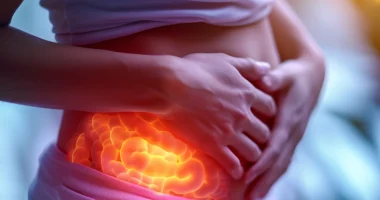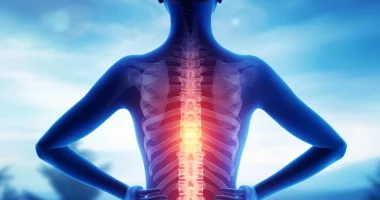Claw toe
General information
Claw toe deformity is a uni- or bilateral disorder of the position of one or more toes. With this pathology, the distal and proximal interphalangeal joints are flexed, and the metatarsophalangeal joint is overextended.
The deformity is caused by a mismatch in the pull of the tendons responsible for the flexion and extension of the small fingers. Initially, it is possible to passively return the fingers to their original position, as they still retain mobility. As the disease progresses, motor functions are lost, and the fingers remain flexed all the time.
The claw deformity adversely affects the foot’s aesthetics. However, the deterioration of the feet’ appearance and the inability to wear open shoes are the most harmless consequences. Much more problematic are pronounced pain syndrome, skin trauma, blister formation, microcirculatory disorders, ulcers, and increased risk of infectious diseases of the foot’s soft tissues.
Types
There is a mobile form of deformity when the mobility of the fingers is preserved, and it is still possible to align them. Over time, it develops into a fixed deformity. In this case, returning the fingers to a normal shape is impossible.
Symptoms
The main manifestation of finger deformity is pain syndrome. Unpleasant sensations occur in different places (from fingers to ankles), depending on the peculiarities of load distribution when compensatory mechanisms are activated.
Patients are usually particularly bothered by pain on the rear surface in the area of the proximal interphalangeal joint, which is associated with excessive shoe pressure on the curved toe.
Increased loading causes painful sensations in the metatarsophalangeal joint. Pressure is redistributed during loading, causing pain throughout the foot and ankle area.
Patients with claw deformity often have the fat pad displaced toward the toes. Normally, it is located under the metatarsophalangeal joint and serves as a natural shock absorber.
In fixed claw deformity, patients are usually faced with the formation of persistent calluses. Excessive keratinization and thickening of the skin is a defense mechanism caused by excessive pressure on maladapted areas. Typically, keratinization forms on the back of the toes, the pads, and in the area of the metatarsophalangeal joint projection on the foot.
Microcirculation disorders can provoke the appearance of ulcerative defects. Wet sores on the skin form and do not take long to heal.
Causes
Claw deformity often occurs against the background of foot deformities (valgus or transverse flatfoot), which is caused by incorrect load distribution, and subsequently by dysfunction of the flexors and extensors. Provoking factors can be:
- wearing uncomfortable or poor-quality shoes;
- peculiarities of foot anatomy;
- hereditary predisposition;
- Traumatic injuries to the fingers and foot (contusions, sprains, fractures);
- inflammatory lesions of the metatarsophalangeal joint;
- rheumatoid joint inflammation;
- metabolic diseases;
- diabetes;
- peripheral nervous system dysfunction;
- high vault.
The elderly are more predisposed to finger deformity due to chronic diseases and the natural decrease in functional activity of joints, tendons, and muscles.
Diagnosis
Diagnosis can be made based on examination. Further examination aims to clarify the causes and identify the nature of the changes. For this purpose, it is used:
- X-rays (assess the location and condition of bones, identify complications of injuries);
- computed tomography (provides more detailed information about the state of bone tissue and allows the detection of old damage);
- magnetic resonance imaging (provides information on the condition of joints, ligaments, vessels, the presence of inflammation);
- plantography (used to diagnose foot deformities).
Identifying the causes of deformity may require laboratory examination (general blood tests, tests for rheumatoid factors, etc.) If necessary, consultations with a rheumatologist or endocrinologist are organized.
Conservative therapy
Conservative treatment is used in the early stages of deformity when the fingers are still mobile and it is possible to correct their position. Irreversible changes are eliminated surgically. Treatment tactics are chosen on a personal basis, taking into account the peculiarities of the clinical case, the general state of health of the patient, and other factors.
The goal of therapy is to eliminate pain syndrome, improve the patient’s quality of life, and stop or slow the progression of the deformity. The following methods can be used to achieve these goals:
- Wearing orthotic devices. Orthotics, pads, and insoles help fix the toes, reduce the load on the forefoot, and prevent skin trauma from shoes.
- Wearing special shoes. It is recommended to wear shoes with a stiff sole in the toe area.
- Taping. This method reduces the joints’ load, improves tissue microcirculation, and fixes bent fingers parallel to the ground plane.
- Execution of gymnastic exercises. Exercises are prescribed to stretch the calf muscles and eliminate hypertonus. Also, dynamic exercises for the foot should be selected, and the ligaments should be strengthened to ensure the correct positioning of the toes.
If the effectiveness of conservative therapy is insufficient, progression of deformity, increasing pain syndrome, and increased risk of infectious and inflammatory complications, surgery is recommended.
Surgical treatment
The surgical treatment method is selected on a personal basis, taking into account the causes and stage of disease development. In some cases, combined interventions are performed. The following surgical techniques are used to correct claw deformity of the fingers:
- extensor tendon repair with lengthening;
- Release of the metatarsophalangeal joint capsule (separation from surrounding structures to normalize the position of the toes);
- Girdlestone-Taylor surgery (moving the flexor to the surface of the finger to compensate for extensor activity);
- arthrodesis of the proximal interphalangeal joint (displacement of the articular surfaces, which provides fibrosis of tissues or formation of a false joint fixing the finger in a flat position);
- osteotomy of the metatarsal bones (shortening to equalize the balance of the soft tissue structures of the foot).
Tendon repair of the toe extensors has a good result. The operation involves a longitudinal incision of the tendons and suturing with lengthening. It reduces the pull of the extensors and helps to normalize the position of the toes, resulting in the restoration of foot function, the disappearance of pain syndrome, and improving the patient’s quality of life.
All these treatment options are available in more than 760 hospitals worldwide (https://doctor.global/results/diseases/claw-toe). For example, Claw toe surgery can be done in 29 clinics across Turkey for an approximate price of $1.7 K (https://doctor.global/results/asia/turkey/all-cities/all-specializations/procedures/claw-toe-surgery).
Prevention
To prevent foot deformities, doctors recommend wearing comfortable shoes of the right size, avoiding high heels, and controlling the load on the feet. This is especially true for athletes, dancers, and people who, by virtue of their profession, have to stand a lot.
In case of injuries to the toes or the foot as a whole, a doctor should be consulted for examination and proper treatment. An active lifestyle and foot exercises can help avoid an imbalance of anatomical structures.
Rehabilitation
The recovery period is 2-3 months. Immediately after surgery, a compression bandage is applied to the foot.
The patient is allowed to move on crutches. After the wounds have completely healed, a set of physical therapies aimed at developing the foot is selected.

